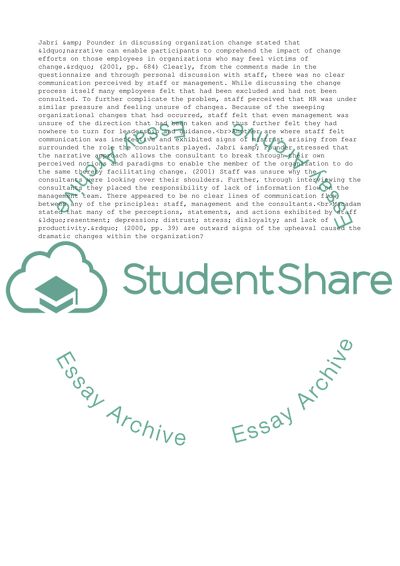Cite this document
(“The Mistrust Felt By Staff Essay Example | Topics and Well Written Essays - 9000 words”, n.d.)
Retrieved from https://studentshare.org/management/1535586-the-process-of-managing-change-to-establish-a-customer-services-centre-an-evaluation-of-the-consultation-process-please-note-topic-not-properly-defined-maybe
Retrieved from https://studentshare.org/management/1535586-the-process-of-managing-change-to-establish-a-customer-services-centre-an-evaluation-of-the-consultation-process-please-note-topic-not-properly-defined-maybe
(The Mistrust Felt By Staff Essay Example | Topics and Well Written Essays - 9000 Words)
https://studentshare.org/management/1535586-the-process-of-managing-change-to-establish-a-customer-services-centre-an-evaluation-of-the-consultation-process-please-note-topic-not-properly-defined-maybe.
https://studentshare.org/management/1535586-the-process-of-managing-change-to-establish-a-customer-services-centre-an-evaluation-of-the-consultation-process-please-note-topic-not-properly-defined-maybe.
“The Mistrust Felt By Staff Essay Example | Topics and Well Written Essays - 9000 Words”, n.d. https://studentshare.org/management/1535586-the-process-of-managing-change-to-establish-a-customer-services-centre-an-evaluation-of-the-consultation-process-please-note-topic-not-properly-defined-maybe.


